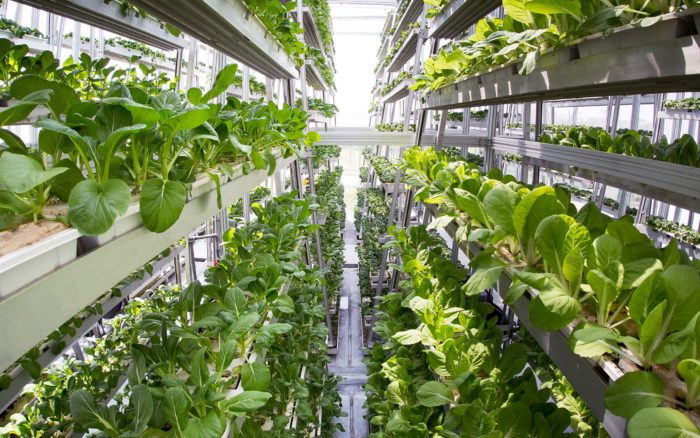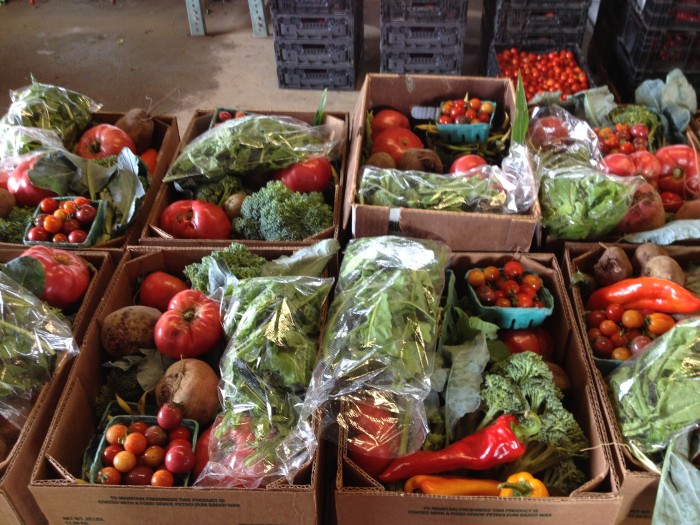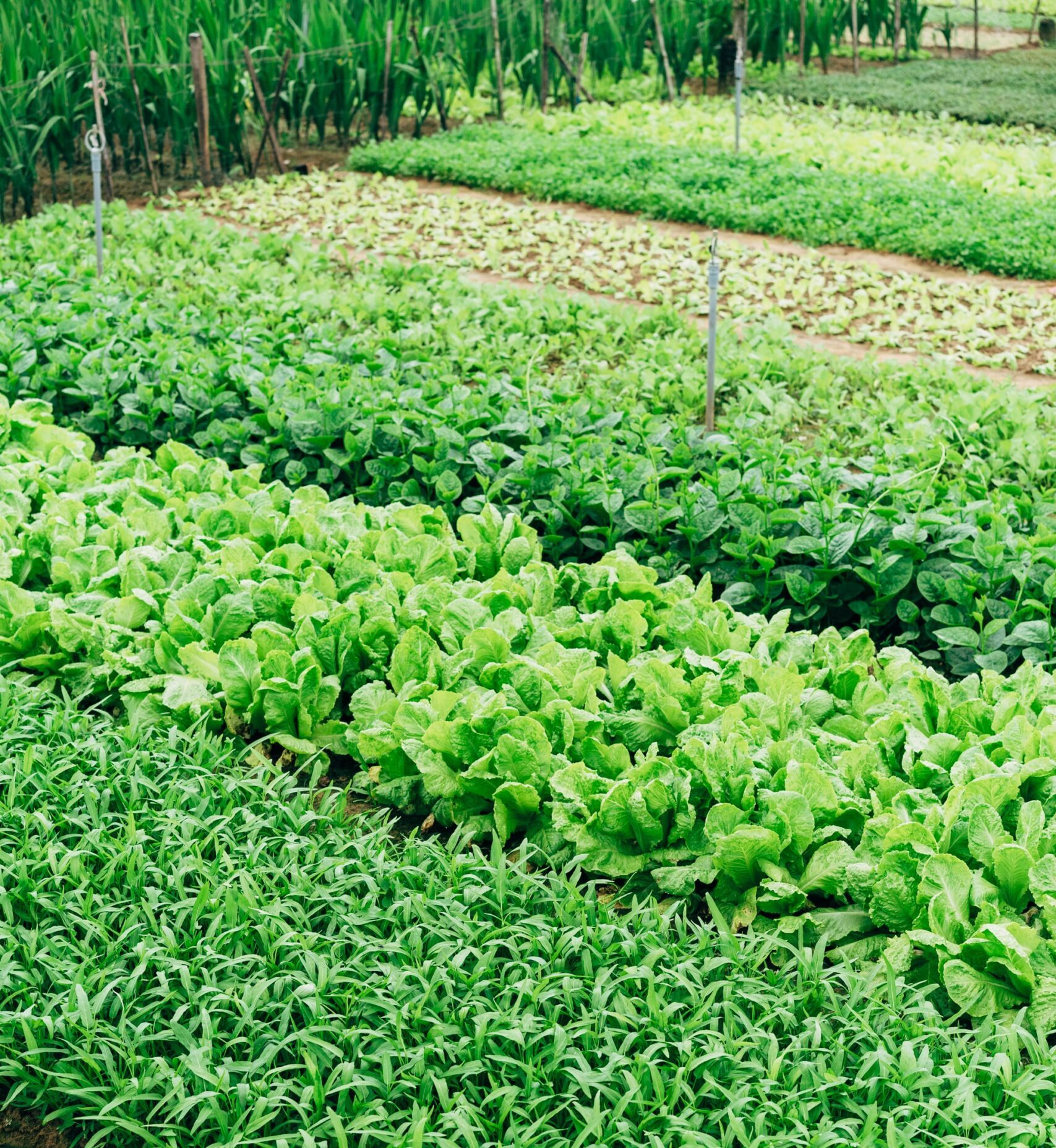A population that continues to grow also means more mouths to feed and therefore more strain on the resources we have already been exploiting—it’s no surprise then, that we could be facing food shortage by midcentury (yes, that’s 2050!) according to a senior science advisor of the U.S. Agency for International Development’s bureau of food security.
Population growth promises to exacerbate climate change due to our ever-growing need for consumerist lifestyle. In addition, climate change itself (with the many extreme weather conditions it brings along with it) will in turn further compromise and reduce our food supply. We essentially have a vicious cycle from which we might be hard-pressed to find a way out.
So, what can we do?
Other than the obvious (*cough cough* go vegan!), doing your best to use public transport and buy locally and organic, sticking to reusable items, reducing waste and using energy wisely, there are technologies that have been developed and implemented successfully to grow more food in places we previously couldn’t. Here are the ones showing the most promise:
Precision farming
Precision farming is admittedly not the perfect solution, but a step in the right direction. The idea behind it is to use satellite navigation systems such as GPS, remote sensing, and the Internet to reduce the use of pesticides, fertilizers and water by finding the areas on a field that need it the most.
Why is this important? When too much fertilizer and manure (which have a very high nitrogen content) are used and not enough organic carbon containing materials, such as plant litter, are brought onto the fields, soil organism biodiversity and activity decrease and Humus is lost instead of being produced (which in turn leads to the emission of carbon dioxide and nitrous oxide gases).
This technology can be used for various purposes—some countries use it simply to make farming more profitable, whereas countries plagued with water scarcity can use it to make more informed decisions regarding irrigation.
The downsides to this technology are that it does still use chemicals (even if it is in smaller quantities). It also requires access to the Internet, and it might be too expensive for small-scale farmers to use.
Vertical farming
Yes, you read that right. Plants in this system are grown vertically up in the air instead of on land, which means it takes up a lot less space, and you can control and optimize the conditions the plants grow in… in theory, that means you could grow almost anything anywhere, and all year round! Vertical farms also have higher yields (‘Sky Greens’ farm in Singapore produces up to 1 tonne of fresh produce daily!).
There are two types of vertical farming depending on how the plants are grown: aeroponic (plants are sprayed with a mist containing water and the necessary nutrients), and hydroponic (plants are grown in water pools containing the nutrients they need).
Vertical farming enables us to grow food without the use of chemicals, since there are no weeds or insects you ‘need’ to get rid of, and provides farmers with a sense of security, since their crops can’t be destroyed by unusual weather events (such as the hail storm which completely destroyed vineyards in Bordeaux, France, this May). Distance from farm to table is also shortened, which means transportation and cooling costs and emissions can be avoided. That being said, vertical farming has its flaws. Not all kinds of crops can be grown (light and expensive foods are ideal –other foods such as potatoes aren’t profitable enough, and grains (which includes rice and wheat and make up a large portion of people’s diets worldwide) simply take up too much space for them to be grown vertically). Vertically-grown foods require more energy to be grown than conventionally grown ones, and are therefore also more expensive, which might make it impossible for lower-income families to be able to afford them. Ideally, in the future, we could find a way to use renewable energy to grow food vertically!
Permaculture
Permaculture is literally the ‘permanent’ growing of food on an area of land in a way which is sustainable, requires minimal input from farmers, has low energy consumption and high adaptability to change. Sounds perfect, right? Two of the most used systems are agroforestry systems and food forests.
Agroforestry systems combine the growing of crops interspersed with trees (be it fruit trees or ones meant to later be cut down for wood), with the goal to make crops more resistant to pests and droughts. The trees lead to the build-up of humus that enriches the soil with nutrients, serve as a carbon sink, and ensure that the farmer has not only immediate yields (from the crops), but also a long-term and diversified source of income.
The only drawback to these systems is that they require substantial upfront investment, and that a lot of planning needs to go into exactly which species will be used for that area and how they will be planted. Many farmers are therefore unsure how to start, and that’s what’s holding them back from switching to these much more environmentally-friendly practices. Organizations such as the International Permaculture Education Network and World Agroforestry are thankfully working to change that, and hopefully in the future these systems will be heavily subsidized by the government to facilitate the switch from conventional farming!
Food forests are similar to agroforestry systems in that several different species are grown together simultaneously, but they usually have even more variety, and are currently being used mainly for more small-scale farming. Here, the idea is to have different ‘layers’ of vegetation, as would be the case in a natural forest. The top layer is made up by the tallest (usually nut) trees. Then come the smaller fruit trees and shrubs such as berries, and the herbs. The last layer above-ground is made up by groundcovers such as strawberries, and the underground layer are roots and tubers (carrots, potatoes, …). Vines such as grapes, squash or beans bring all the layers together by climbing up the small and large trees. The system sure is complex, but it’s absolutely genius. For an inspiring example of how it’s done, check out The Food Forest, founded by Graham and Annmarie Brookman.
Since both the agroforestry and the food forest systems aren’t monocultures, they increase biodiversity and lead to more resistant crops. Avoidance of the use of fertilizers, herbicides, and pesticides also means nitrogen runoff can be avoided.
These sustainable farming methods prove that we’re transitioning to a better way of growing food—one in which hopefully no animals will need to live lives of torture, and all of us will have access to high-quality, affordable food. If you’re wondering how you can help, consider joining community-supported agriculture in your area. It’s the perfect way to buy seasonal, local, usually organic produce and support your community. You might also have the chance to take part in the decision-making process when deciding what to plant, or even help out at the farm to see how your food is grown! All you need to do is pay a yearly or monthly membership, and you’ll get your produce delivered either straight to your door, or to a pick-up place near you.
The membership is what enables farmers to commit to sustainable agriculture without being pressured by market prices, so you’ll be able to rest assured knowing that your food was grown respecting the environment. For more resources to learn about it and find one near you, check out CSA website or just type in ‘Community Supported Agriculture’ and the region you live in into your search engine.
Who knows? Maybe you’ll start inspiring those around you to start buying more local produce too 😉
Also by Rebecca: Curried Coconut Veggies With Falafel Crumble
Vegan High Protein Cookie Dough Bars
Get more like this—Sign up for our daily inspirational newsletter for exclusive content!




